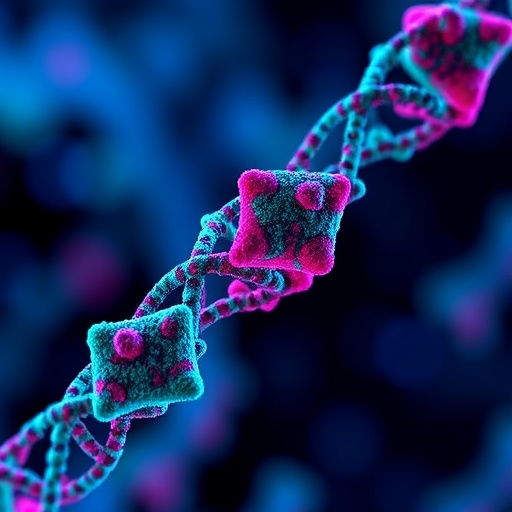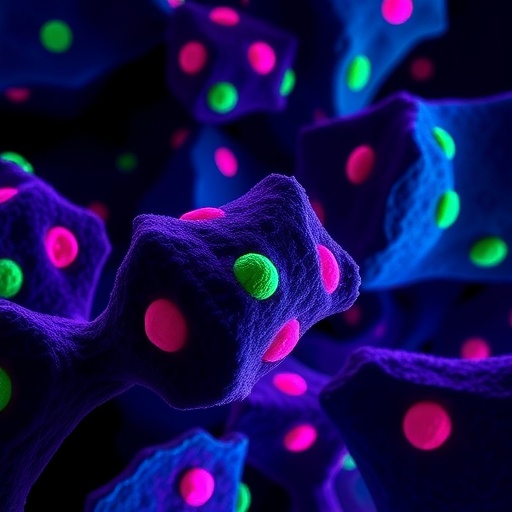In a groundbreaking multi-center, real-world study recently published in BMC Cancer, researchers unveil critical insights into the clinical efficacy of Disitamab Vedotin (DV), a novel HER-2-targeting antibody-drug conjugate (ADC), in patients battling metastatic urothelial carcinoma (mUC). Despite significant strides in oncology, treatment options for mUC remain limited, making this research pivotal for clinicians and patients seeking more effective, personalized therapies.
Disitamab Vedotin represents a frontier in targeted cancer therapy, coupling a monoclonal antibody against HER-2 with a potent cytotoxic agent, allowing selective delivery of chemotherapy directly to tumor cells. While prior clinical trials showcased its promise, understanding its impact under real-world conditions has been elusive, sparking this exhaustive retrospective investigation involving 30 mUC patients treated across three leading hospitals from April 2021 to March 2024.
The study meticulously integrates clinicopathological data alongside advanced targeted sequencing to decode the molecular landscape influencing therapeutic outcomes. With an impressive median follow-up of 12.1 months, findings revealed a striking median progression-free survival (PFS) of 12.2 months, a figure substantially exceeding historical benchmarks for mUC. Furthermore, the median overall survival (OS) had not been reached at the time of analysis, with a 12-month OS rate soaring at 86.7%, underscoring the potential durability of response to Disitamab Vedotin.
A deeper dive into efficacy metrics highlighted an objective response rate (ORR) of 42.3% and a disease control rate (DCR) of 73.1%, statistics that underscore the substantial clinical benefit some patients derive from DV therapy. Importantly, responses were not evenly distributed; rather, they correlated with specific biological markers, bringing precision medicine into sharp focus for mUC treatment.
Foremost among these correlates was HER-2 expression level. Patients demonstrating higher HER-2 immunohistochemistry (IHC) scores (2+ and 3+) achieved a median PFS of 13.1 months versus just 4.6 months in those with IHC 1+ expression. Response rates dramatically favored the higher HER-2 group at 60%, while no responses materialized in the lower expression cohort. This delineation affirms HER-2 as a critical biomarker for selecting candidates likely to benefit from DV.
Equally compelling was evidence linking prior chemotherapy response to enhanced DV outcomes. Patients with a history of durable response to platinum-based regimens enjoyed a median PFS of 14.2 months and a response rate of 50%, contrasting sharply with 3.6 months and 10% in others. This suggests a biological interplay between chemotherapy sensitivity and ADC efficacy, paving the way for combined or sequential treatment strategies.
Molecular profiling lent further nuance. Tumor mutation burden (TMB), a surrogate indicator of genomic instability and neoantigen load, emerged as a potent predictor of DV benefit. High TMB patients saw median PFS extended to 12.8 months compared to 4.6 months in low TMB counterparts. These findings, reinforced by rigorous multivariable Cox regression models, demonstrate that an elevated TMB enhances tumor susceptibility to targeted ADC therapy, potentially through immune-mediated mechanisms or increased cellular uptake.
Collectively, these clinicopathological and molecular biomarkers enable a refined stratification framework for mUC patients, optimizing the use of Disitamab Vedotin and enhancing personalized oncology paradigms. The real-world context of this study bolsters its relevance, capturing the heterogeneity and complexity of routine clinical practice as opposed to controlled trial environments.
Moreover, the safety profile of DV under observational scrutiny was consistent with earlier studies, with treatment-related adverse events manageable and generally tolerable. This balance of efficacy and safety consolidates DV’s position as a viable treatment modality in a disease notoriously difficult to treat.
The implications of this research reverberate beyond mUC. It reinforces the therapeutic value of HER-2-directed ADCs in solid tumors, potentially inspiring broader applications in HER-2-expressing malignancies. Additionally, the identification of TMB and chemotherapy response as predictive markers may serve as a blueprint for integrating molecular diagnostics into ADC treatment workflows.
Future investigations are essential to validate and expand these findings, ideally incorporating prospective trials with larger cohorts and standardized biomarker assessments. Exploring combination regimens with immunotherapies or novel agents could further amplify clinical benefit, advancing the frontier of precision oncology.
In conclusion, this landmark study positions Disitamab Vedotin as a transformative therapeutic for metastatic urothelial carcinoma, especially in patients with high HER-2 expression, favorable chemotherapy response history, and elevated tumor mutation burden. These revelations herald a new era in mUC management, promising improved survival and quality of life through targeted, molecularly guided interventions. As the oncology community embraces these insights, patients stand to gain unprecedented hope and improved outcomes in their cancer journey.
Subject of Research: Disitamab Vedotin therapy in metastatic urothelial carcinoma and its clinicopathological and molecular correlates.
Article Title: Clinicopathological and molecular correlates of clinical benefit from disitamab vedotin (RC48), a HER-2-targeting antibody-drug conjugate, in metastatic urothelial carcinoma: a multi-center, real-world study.
Article References: Liu, Z., Jin, K., Xu, Z. et al. Clinicopathological and molecular correlates of clinical benefit from disitamab vedotin (RC48), a HER-2-targeting antibody-drug conjugate, in metastatic urothelial carcinoma: a multi-center, real-world study. BMC Cancer 25, 1432 (2025). https://doi.org/10.1186/s12885-025-14870-x
Image Credits: Scienmag.com
DOI: https://doi.org/10.1186/s12885-025-14870-x




